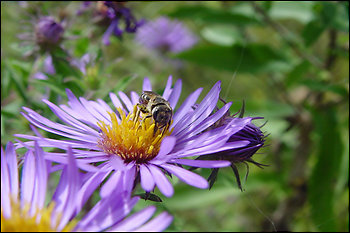
A survey of bee health released Tuesday revealed a grim picture, with 36.1 percent of the nation’s commercially managed hives lost since last year.
Last year’s survey commissioned by the Apiary Inspectors of America found losses of about 32 percent.
As beekeepers travel with their hives this spring to pollinate crops around the country, it’s clear the insects are buckling under the weight of new diseases, pesticide drift and old enemies like the parasitic varroa mite, said Dennis vanEngelsdorp, president of the group.
This is the second year the association has measured colony deaths across the country. This means there aren’t enough numbers to show a trend, but clearly bees are dying at unsustainable levels and the situation is not improving, said vanEngelsdorp, also a bee expert with the Pennsylvania Department of Agriculture.
“For two years in a row, we’ve sustained a substantial loss,” he said. “That’s an astonishing number. Imagine if one out of every three cows, or one out of every three chickens, were dying. That would raise a lot of alarm.”
